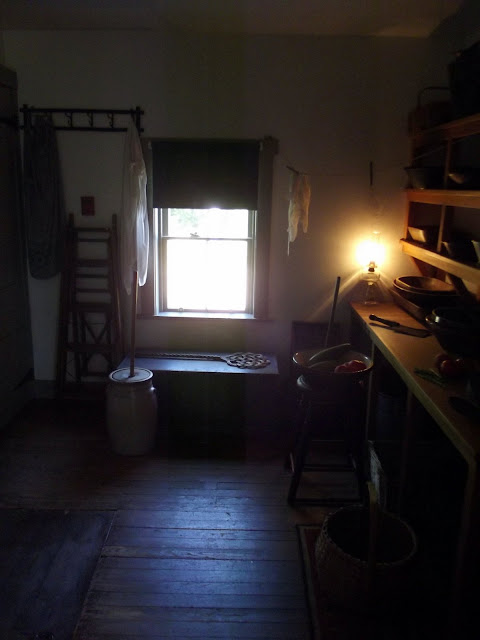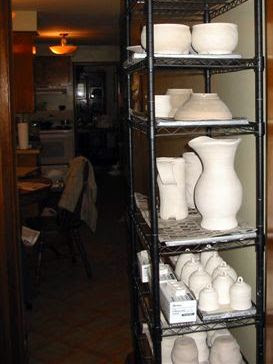Despite being an incredibly common problem among school-aged children, head lice are still discussed in whispers in North America. My daughter caught them at school at the same time as several of her classmates at the end of the school year.
Since September is a common time for infestations to be found, I thought I'd share our experience in removing them from her hair (and my son's, since of course he had them too, although a fraction as many). We did all of these treatments as a family every time, because the lice spread so easily.
(We followed the house cleaning instructions provided at the very thorough websites linked above, washing our clothes and bedding in the hottest water and drying them on the hottest setting, and vacuuming thoroughly. Head lice are not bedbugs or fleas, and they die after 24-48 hours off a human host, so full-on-hazmat-throw-everything-away is not necessary. Thank goodness.)
Treatment 1, Day of discovery: An
over-the-counter permethrin conditioner recommended by the pharmacist at the closest drug store, used according to the instructions (shampoo hair, leave in 10 minutes, rinse out, towel dry hair, comb with provided plastic comb). Unfortunately a
growing percentage of lice are resistant to permethrin treatment, and the pesticide only kills the live insects, not the eggs (nits). Supposedly it leaves a residue in your hair that will kill them as they hatch, and needs to be repeated after 7 days.
Treatment 2, daily since discovery: A
half-strength rinse with vinegar followed by combing, twice a day. The vinegar helps to remove the glue that holds nits in the hair, so that they can be removed more easily. This worked like magic to remove the majority of the eggs and empty egg casings - but my daughter has lots of very fine-textured hair so the comb could not grab everything. Some people pick the rest out with their fingernails at that point, but my hands are too shaky for that (thanks, essential tremor), so I needed to get a better comb.
Treatment 3: carefully
flat-ironing the hair while wet to kill any remaining eggs by heating them - a home remedy I had run across that seemed like it was worth a try. Of course this only works if your child will sit very still, because you need to be able to get right next to the scalp.
Treatment 4:
saturating hair with conditioner then combing.
A friend who lived in the UK said the kit available from this website worked great for her - and I highly recommend the video on it for good advice on how (conditioner keeps live lice from evading the comb because they won't move while wet!) and when (at least every 3rd day (after any missed eggs could have hatched), until day 14 or when the lice are gone, whichever comes last) to use the comb. This is super important!
Treatment 5, Day 6 after discovery: The
Nit Nannies kit, purchased locally from Beaners, a kids' haircut chain. It includes a mineral-oil based treatment (to suffocate the insects; it also contains an ingredient that dissolves insects' exoskeletons, and more vinegar), shower caps (because you leave it on for 2 hours, and it's messy - you'll also want a towel draped over shoulders to protect clothing from drips), and two combs (one metal that looks similar to
this one, and one very fine-toothed plastic one with a magnifier on it, both of which work better than the comb we were using previously).
If you don't have local access to Nit Nannies, you could try the
mineral oil / vinegar 50/50 solution in its place, combined with an
isopropyl myristate rinse (another chitin dissolver). You don't have to use mineral oil - olive oil or canola oil will work too - but it's colourless and scentless so it's usually what's recommended.
I'm mentioning this kit by name, instead of in generic terms, because it's the one that worked best for us, alongside a careful combing procedure, AND it's an environmentally friendly option. When we did our 7-day retreatment with permethrin the following day,
there was nothing left to comb out of my children's hair.
We continued checking daily for the next couple of weeks to be sure, and found a couple of additional insects during the second week, but by the third week we found nothing. Continuing to comb even when you find nothing is crucial to make sure you don't end up with a single missed egg turning into a whole new infestation - as we discovered to our chagrin in week five, when we found a dozen or so insects in my son's hair, and two more in mine, and started the cycle over again. We are now at week 10 since we originally found the lice, and we haven't seen any nymphs or nits since week 7 during religious combing with conditioner every third day, so I think we can finally loosen up our combing schedule. We'll continue to comb once a week through autumn and winter just to make sure the kids haven't picked up more at school.
We also use a preventive hairspray with essential oils in it (geranium, lemongrass, and peppermint is the combo in the one I bought), although that feels more like we're spritzing it for good luck than because of any proof that it works.
Here's a couple of good summaries of
head lice myths and facts. I'll add a few more:
1. Hiding from your kids how utterly icked out you are about the whole thing is way, way harder than the actual tedious act of nitpicking.
2. Anecdotally, it appears from many of the articles I've linked to that lice infestations are becoming more common among school-age children worldwide. I haven't found any actual numbers though.
3. Head lice don't carry disease, have no preference for dirty hair over clean, and are found infesting children of all socioeconomic demographics. This bears repeating. It's not your fault if your kids get this, and nobody should be shunned because of it.
4. Insensitive parents who loudly gossip about which disgusting children are responsible for the notice sent home from school to check your kids' heads, will probably get their comeuppance when their kids get lice next year. (Karma's a bitch when you are.) They can also be easily derailed by breezily saying, "Oh, one of those kids was mine, sorry! I was so grossed out! I never thought it could happen to us. But here's what I found really worked..."






















































